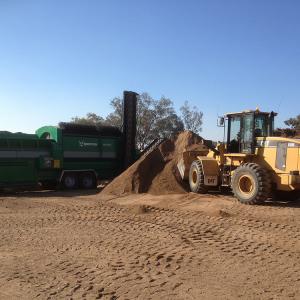Soil is a loose surface material that covers most of the country. It consists of organic matter and inorganic particles. Soil is a natural resource that can be classified into various soil types, each with unique characteristics that provide both growing benefits and constraints. Click here to find out more information about types of soils. Based on the dominant size of the particles within a soil, soil can be classified as sand, clay, silt, peat, chalk, or loam.

There are different types of soils:
- Sandy Soil:
Sandy soil is light, warm, dry, and tends to be acidic and poor in nutrients. Sandy soils are often referred to as light soils because of their high proportion of sand and little loam (clay is heavier than sand).
- Clay Soil:
Clay soil is a heavy type of soil that benefits from high levels of nutrients. Clay remains moist and cool in winter and dries up in summer. This soil is more than 25 percent clay and because of the spaces between the clay particles, the clay retains a large amount of water.
- Mud Soil:
Mud soil is a type of soil that is light and moisture resistant with a high level of fertility. Since silty soils are affected by medium-sized particles, they drain well and retain moisture well.
- Peat Soil:
Peat soil is rich in organic matter and retains a lot of moisture. This type of soil is very rare in gardens and is often brought into the garden to provide an optimal soil base for planting.
Soils are considered a gardener's best friend due to their perfect balance of soil particles, but they still benefit from being supplemented with additional organic matter.